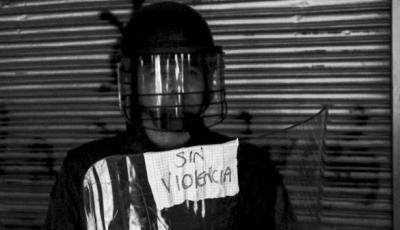Introduction to the Anthropology of Police: Law and Disorder Everywhere?
Posted:
Time to read:
Post by Paul Mutsaers, a postdoctoral researcher at the Tilburg School of Humanities, Tilburg University, The Netherlands. Paul was previously employed by the Police Academy of the Netherlands. Paul is on Twitter @MutsaersPaul. This post is the first installment of Border Criminologies’ themed week on the Anthropology of Police organised by Paul.
This themed week draws together a series of essays from the nascent field of the anthropology of policing. As discussed below, the police anthropologists included in this themed week look at police as the ‘immediate face of government,’ that is, as gatekeepers of important dimensions of citizenship. As such, they have a contribution to make to our understanding of the policing of borders within the nation and, in particular, of those citizens who live ‘on the edge’ (the poor in São Paulo, the homeless in Washington, DC, and migrants in Amsterdam).
Although its date of birth is hard to pinpoint on a calendar―for that would presume fixed contours of knowledge, as John L. Comaroff claims in this foreword to a recent volume on the anthropology of police―the anthropology of police arguably began with a volume edited by Jean and John Comaroff entitled Law and Disorder in the Postcolony. Featuring a group of anthropologists, including Teresa Caldeira, Peter Geschiere, Achille Mbembe, and Nancy Scheper-Hughes, this book focuses on the remarkable co-occurrence of widespread disorder and a fetishism of the law in so-called ‘postcolonies.’ With the upsurge of an increasingly aggressive law and order discourse, so the argument goes, entire sections of postcolonial societies no longer recognize themselves, nor feel protected by the authority of the state, its laws, or its enforcers. In extreme cases, state authority even gets dispersed into ‘patchworks of partial, horizontal sovereignties.’

These events confirm that law (enforcement) represents the interests of particular segments of society that have the power to translate their interests into public policy (see Quinney or Zedner). Those who lack such power often take the brunt of law enforcement. In line with the longstanding anthropological concern for the marginalized, abandoned, and excluded, police anthropologists have begun to make an important contribution by entering and communicating the experiences of those who take that brunt. This holds true as well for the entries of this themed week on the anthropology of police.
In the second post of this themed week, Sinan Çankaya reports on his long-term fieldwork at the Dutch police. He draws a parallel between EU policies to externalize the borders of Europe by pushing them to third countries, and the local operations of police officers in Amsterdam who purify white and rich neighbourhoods by telling ethnic minority youngsters they don’t belong in these parts of the city. Global north-south relations are reproduced on a smaller scale in Amsterdam, where the anthropologist shows that small spaces speak to larger issues. Sinan convincingly argues that borders are also erected internally, within the nation-state.

The fourth entry of this themed week comes from Graham Denyer Willis, who reports on the notion of abandonment, which became central in his ethnographic work on the police in São Paulo. This notion is taken as a lens through which to view the experiences of the urban poor with police as an unevenly distributed public good. This abandonment is, Graham argues, by design. In fact, it’s form of governance through which the lives of millions living in metropolitan Brazil are devalued. In line with the remark above, he argues that anthropology is ‘ideally suited to detail the conflicted contours of police and policing.’ In his The Killing Consensus, Graham does so in a literary style that borders on Coetzee quality.
In the final entry of the week, I take a meta-stance and look at the reception of police anthropologists (and their work) by police. Tongue-in-cheek, I argue that the police anthropologist can be seen as ‘The Asshole,’ which John van Maanen once described as s/he who does not accept the police definition of the situation. While van Maanen referred to street encounters, we can also apply the label to the critical police anthropologist.
Taken together, these blog entries further consolidate the empirical base of research in the field of border criminologies. They familiarize Border Criminologies' readers with three different contexts of policing, in which the police once again turn out to be important actors in the (unequal) negotiations between the state and its citizens over the terms of order and citizenship.
Any comments about this post? Get in touch with us! Send us an email, or post a comment here or on Facebook. You can also tweet us.
__________
How to cite this blog post (Harvard style):
Mutsaers, P. (2016) Introduction to the Anthropology of Police: Law and Disorder Everywhere? Available at: https://www.law.ox.ac.uk/research-subject-groups/centre-criminology/centreborder-criminologies/blog/2016/03/introduction (Accessed [date]).
Share:








